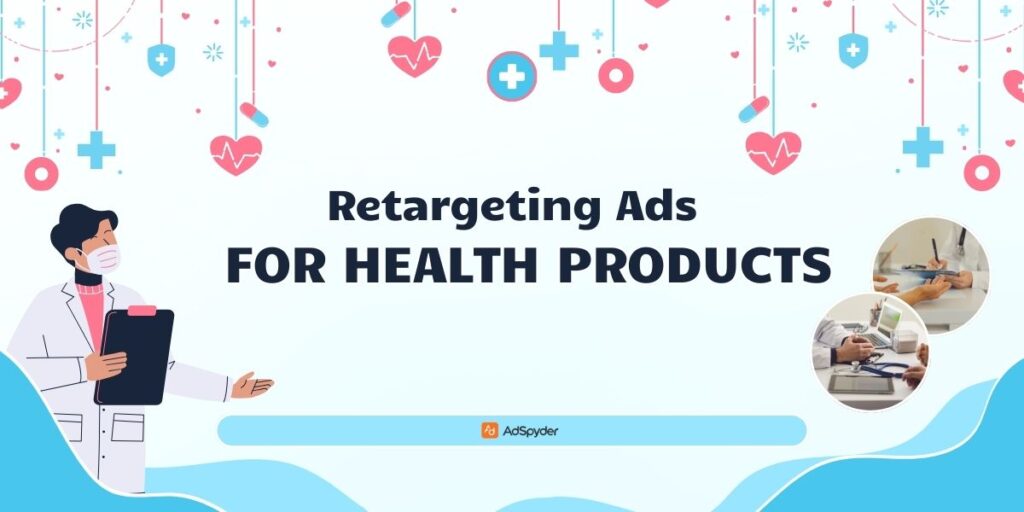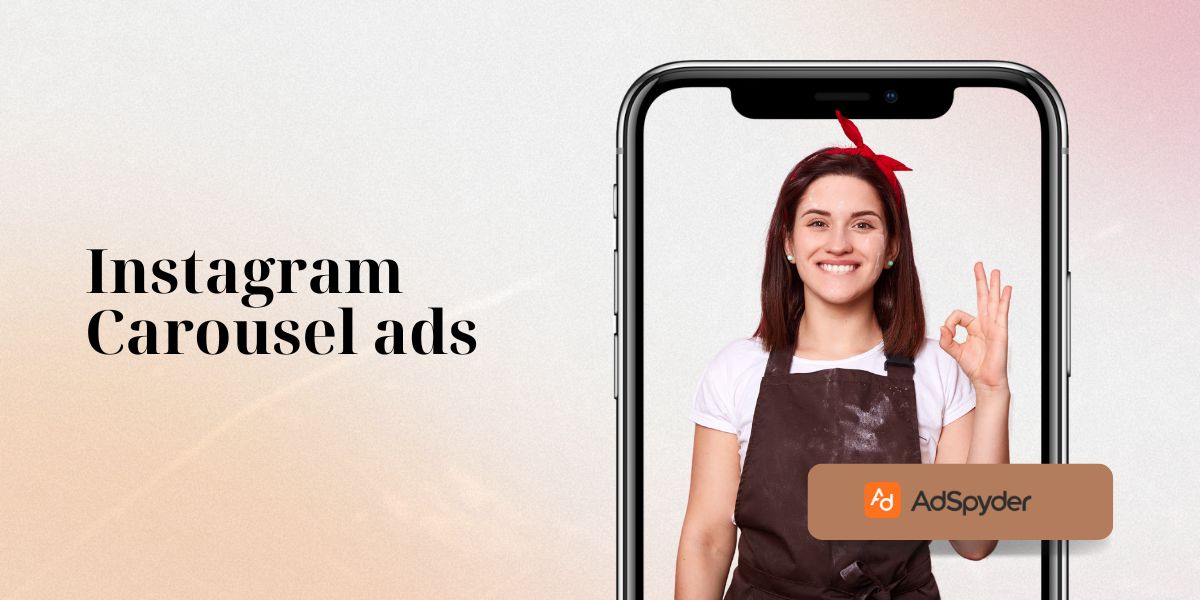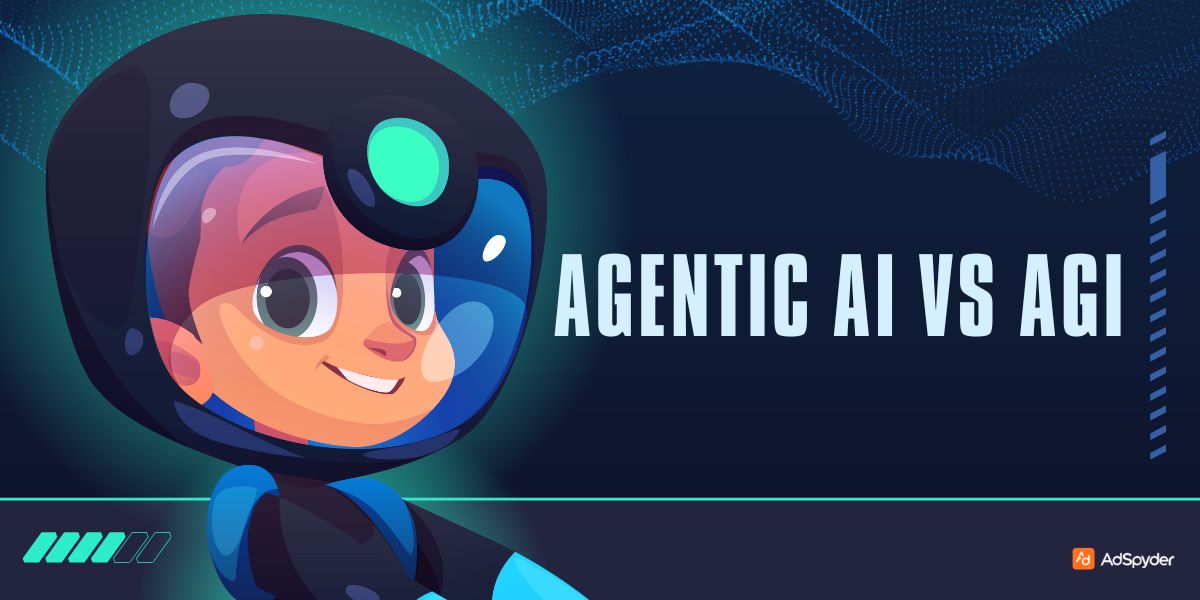The wellness and health industry is thriving, with consumers actively seeking supplements, organic foods, skincare, fitness items, and medical devices to enhance their well-being. However, compared to other consumer products, health products usually need more comparison, research, and trust before purchase. This results in high cart abandonment rates and prospective customers who window shop but fail to buy. It is here that retargeting ads become a marketing necessity. Retargeting Ads for Health Products to reapproach potential customers, remind them of their initial interest, and nudge them back into completing their purchase. As opposed to standard advertising, retargeting targets users who have already engaged with your brand, making it one of the most cost-efficient ways to enhance conversions and sales.
Ready to Elevate your Marketing Strategy?
Why Retargeting Is Essential for Health Brands
Here’s the breakdown of why it’s so critical:
Consumers Take Longer to Decide
- Shoppers take longer to decide when they research ingredients, certifications, and customer reviews before making a purchase.
- Retargeting brings your brand to their mind during their purchasing process.
High Cart Abandonment Rates
- Health and wellness brands tend to have cart abandonment rates over 60% because of price concerns, trust issues, or delivery time.
- Retargeting helps recover lost sales by offering discounts, testimonials, or free shipping incentives.
Competitive Market Demands Brand Recall
- The customer is also bombarded with many brands offering similar health products.
- Retargeting makes sure that when they leave your site, your brand still stays immersed in their thoughts.
This guide will cover the ins and outs of designing successful retargeting campaigns for health products, platforms to use, and ways to optimize your ads for maximum revenue.
Related – Local Cafe and Restaurant Advertising
Understanding Retargeting for Health Product Brands

In the busy health and wellness market today, it’s not just about getting people to your site—you need to get them back. That’s where retargeting is essential. For health product companies, where trust, education, and timing are key to the customer journey, retargeting is one of the most effective tools to remain top of mind, cultivate interest, and drive conversions.
How Retargeting Works
Retargeting, or remarketing, employs tracking technology (cookies and pixels) to track prospective customers once they have exited your site. They are then served targeted ads on platforms such as Google, Facebook, Instagram, and YouTube, reminding them of their interest in your products.
Key Retargeting Audience Segments
Not every visitor needs to be treated equally for health brands. Segmenting your retargeting audience makes your ads seem personalized and relevant.
| Audience Segment | Retargeting Strategy | Example Ad Message |
| Cart Abandoners | Try limited-time offers, free delivery, or scarcity messaging. | “You left something behind! Get 10% off your immune-boosting vitamins—only for the next 24 hours!” |
| Product Page Viewers | Feature testimonials, product benefits, and expert endorsements. | ” 50,000+ customers now trust our organic protein powder—find out why! |
| Engaged Social Media Users | Include influencer reviews and customer success stories. | “Your journey towards wellness starts here! Discover why top nutritionists can’t get enough of our probiotics.” |
| Past Buyers (Re-Engagement) | Promote subscription discounts and new product launches. | “Your wellness routine deserves the best—subscribe & save 20% on your next order!” |
Brands can enhance engagement and maximize ad spending by tailoring ads according to previous interactions.
Related – Local Advertising for Wellness Centers
Best Platforms for Running Retargeting Ads for Health Products
Various platforms have different means of retargeting potential customers. The best platforms for health product brands are:
Facebook & Instagram Retargeting Ads
Facebook and Instagram offer effective retargeting capabilities that enable brands to reach highly engaged people who have already expressed interest. These sites are perfect for:
- Displaying visually attractive ads (testimonials, product value, influencer reviews).
- Deploying time-sensitive promotions to build urgency.
- Retargeting based on shopping activity (e.g., looking at specific products, putting into cart, or viewing video ads).
1. Dynamic Product Ads (DPA) for Cart Abandoners
Here’s an overview of the section:
- Automatically show the same product a customer looked at but didn’t buy.
- Example: A supplement company retargets consumers with an ad displaying “Still thinking about our organic multivitamin? Complete your purchase now with 15% off!”
2. Testimonial & Social Proof Ads
Here’s how you can dissect it :
- Displaying real customer testimonials or expert approval increases trust.
- Example: A collagen company has a carousel ad displaying before-and-after real customer testimonials.
3. Limited-Time Offer Retargeting Ads
Here’s a solid breakdown for Limited-Time Offer Retargeting Ads, customized for health product brands:
- A sense of urgency encourages reluctant buyers.
- Example: A skincare company sends out a 48-hour flash sale retargeting ad, announcing, “Last chance to save 20% on our dermatologist-recommended serum!”
Google Display & YouTube Retargeting
Google’s network enables brands to retarget customers on millions of websites, applications, and YouTube videos.
1. Google Display Retargeting Ads
Let’s break this down with an example:
- Perfect for reminding people about your product as they browse other sites.
- Example: A herbal supplement business places a display ad on a health blog for “Boost Your Wellness—Try Our Top-Rated Adaptogens Today”.
2. YouTube Video Retargeting Ads
Here’s a quick summary:
- Ideal for retargeting viewers of fitness or health-related content.
- Example: A Protein shake business retargets users who have viewed “Best Supplements for Muscle Recovery” using a video advertisement showcasing a fitness coach explaining the product’s benefits.
3. Google Search Retargeting (RLSA – Remarketing Lists for Search Ads)
Following is a brief summary:
- Serves users who have earlier visited your website with custom search ads.
- Example: One multivitamin brand retargets previous guests looking for “best vitamins for energy” with an ad discounting “first purchase—Limited Time Only—10%!
Check Out – Retargeting Ads for Food Businesses
How to Optimize Retargeting Campaigns for Higher Conversions
Improving retargeting campaigns is simply about maximizing your approach to getting the right person at the right moment with the right message. Whether utilizing Google Display, YouTube, or Search retargeting (RLSA), follow this strong blueprint to increase conversion rates:
A/B Testing, Retargeting Ad Variations
For A/B testing of your retargeting ads:
- Test various ad messages (coupons vs. testimonials vs. informative content).
- Test various CTAs (“Buy Now” vs. “Learn More” vs. “Subscribe & Save”) to see which CTA converts the most. Test static image ads vs. video ads for greater engagement.
Controlling Ad Frequency to Avoid Overexposure
Here is how to balance it right:
- Cap retargeting ads to 3-5 times per week per customer to avoid ad fatigue.
- Hide converted customers from seeing repetitive ads.
Leveraging AI & Automation for Smarter Ad Management
Google Ads make real-time bids based on:
- Google’s Smart Bidding makes real-time ad placements.
- Facebook’s Dynamic Creative Optimization (DCO) tests different ad versions automatically to optimize results.
Advanced Retargeting Ads for Health Products

Once a brand has established basic retargeting campaigns, optimizing and scaling up efforts to maximize conversions and retention is the next step. This entails cross-channel unification, tailored messaging, and behavior-based targeting.
Cross-Channel Retargeting for Maximum Reach
Most consumers engage with a brand across several touchpoints before they actually make a purchase. By having Google, Facebook, Instagram, YouTube, and email marketing included, brands are able to design a seamless experience that maximizes the chances of conversion.
| Touchpoint | Retargeting Strategy | Example |
| Google Search | RLSA (Remarketing Lists for Search Ads) | A user searches for “best organic vitamin C supplements” following a visit to your product page. Your retargeted ad sits atop their search results. |
| Facebook & Instagram | Dynamic Product Ads (DPA) | A user sees a product but doesn’t purchase it. Subsequently, they receive a carousel ad featuring the same product, reviews, and an exclusive discount. |
| YouTube Video Ads | Behavioral Retargeting | They see a fitness influencer on social media giving a review for your supplement. You retarget them with an ad featuring a special offer. |
| Email Retargeting | Cart Abandonment Emails | A buyer places probiotics in their cart but fails to check out. They are sent an email with a reminder of the advantages and free shipping.
. |
By aligning messaging across various channels, brands can build a more powerful brand presence and nudge consumers gently towards finishing their purchase.
Behavioral-Based Retargeting for Personalized Ads
Retargeting ads need not be bland reminders—retarget according to a user’s past actions and engagement level. This renders retargeting more relevant, interactive, and impactful.
| User Behavior | Best Retargeting Strategy |
| Browsed multiple products but didn’t buy | Retarget with an ad comparing bestsellers and featuring top customer reviews. |
| Watched 50% of a product video but didn’t click | Show a YouTube ad with a customer testimonial and a CTA. |
| Interacted with social media comments but never opened the website | Target with a free sample or instructional piece to build up trust. |
| Abandoned checkout process | Show them an offer in which they will save money only during a specific duration. |
Data science ensures the user sees the best ad at the right time with a better conversion rate.
Check Out – Google Ads for Gyms and Supplements
Scaling Retargeting Campaigns for Sustainable Growth
Once a brand has a profitable retargeting campaign, it’s time to scale campaigns without sacrificing efficiency. Here’s how:
Budget Upliftment on Top-Performing Audiences
Let’s get specific:
- Find the top-performing segments (e.g., cart abandoners, repeat shoppers) and uplift ad spending on these audiences.
- If cart abandoners convert at 10%, but social media engagers convert at 2%, allocate more budget to cart abandoners.
Scaling to Lookalike & Similar Audiences
Following is how to target Expand to Lookalike & Similar Audiences, with an example:
- Facebook’s Lookalike Audiences and Google’s Similar Audiences allow brands to target new potential buyers who look like existing customers.
- For example, if a collagen supplement company discovers that women aged 30-45 who exercise weekly are their best customers, they can build a Lookalike Audience of like-minded women who have not yet engaged with their brand.
Retargeting Existing Customers for Repeat Purchases
The following is an overview:
- Most wellness products (i.e., vitamins, protein shakes, and cosmetics) need repeated use. Retargeting old customers guarantees more customer retention and lifetime value.
Best Strategies
Here’s how to do it strategically:
- Provide subscription discounts (“Subscribe & save 20%”).
- Cross-sell complementary products (“If you enjoyed our probiotic, try our new digestive enzyme blend!”).
- Display limited-time reordering reminders before their last purchase expires.
Common Retargeting Errors & How to Steer Clear

Even the best-planned retargeting efforts can go awry if typical errors are not corrected. Here’s what brands need to be careful about:
Over-Retargeting & Ad Fatigue
Error: Displaying the same ad repeatedly, leading to possible buyers ignoring or blocking the brand.
Solution:
- Cap frequency at 3-5 impressions per user per week.
- Rotate ad creatives every 2-3 weeks to avoid stale content.
Failing to Exclude Converted Customers
Error: Retargeting individuals who have already bought the product.
Solution:
- Build an exclusion audience of recent buyers and move them to repeat purchase or cross-sell ads instead.
Applying the Incorrect Ad Format for Retargeting
Error: Using static image ads only when video or testimonials may perform better.
Solution:
- Test carousel ads to display multiple products.
- Use video ads for greater engagement.
- A/B test various formats to determine which performs best.
Not Optimizing Landing Pages for Conversions
Error: Retargeting ads push people back to a generic homepage rather than a separate product landing page.
Solution:
Make landing pages align with the ad offer (i.e., if an ad is offering 10% off, then the landing page should clearly display the discount).
Make landing pages load quickly and be mobile-friendly.
Frequently Asked Questions (FAQs) for Retargeting Ads for Health Products
What is the optimal retargeting platform for health products?
Optimal platforms vary based on where your audience is most active:
- Facebook & Instagram: Ideal for visual narratives, social validation, and influencer advertising.
- Google Display & YouTube: Optimal for brand recognition and learning.
- Google Search (RLSA): Best for re-acquiring high-intent consumers searching for products like yours.
How long should I retarget potential customers?
To retarget potential customers:
- Cart abandoners: Retarget 1-7 days for optimal performance.
- Product page visitors: Retarget in 7-14 days to provide research time.
- Blog readers & social interactors: Retarget in 15-30 days with informative content.
What’s a good retargeting ad conversion rate?
Retargeting ads typically have 2x-4x the conversion rates of regular ads. A solid benchmark is 3-6% conversion, with optimized efforts achieving 10%+.
Must I always provide discounts in retargeting ads?
No. Experiment with social proof, expert testimonials, and urgency messaging first before using discounts.
How do I prevent ad fatigue with retargeting?
To prevent ad fatigue with retargeting:
- Swap ad creatives every 2-4 weeks.
- Employ various ad formats (video, carousel, testimonials).
- Establish frequency caps so users won’t view the same ad repeatedly.
How to know whether my retargeting ads are working?
Monitor click-through rates (CTR), conversion rates, and ROAS (return on ad spend) through Google Analytics, Facebook Ads Manager and Google Ads Reports.
Can I retarget users who visited my blog but didn’t purchase?
Yes! Should target blog visitors with relevant product offers, Google Display & Facebook Ads.
Recommended For You – Best Ad Strategies for Fitness Products
Conclusion for Retargeting Ads for Health Products
Retargeting ads are crucial for health brands that seek to convert reluctant shoppers, drive sales, and foster long-term customer loyalty. By using advanced segmentation, cross-channel retargeting, and behavioral targeting, brands can reach the highest number of conversions while minimizing ad spend wastage.
With the proper technique, retargeting can help one-time browsers become repeat customers, providing continuous revenue growth to health and wellness companies. Today is the time to maximize your retargeting strategy and get your brand where it needs to be!




